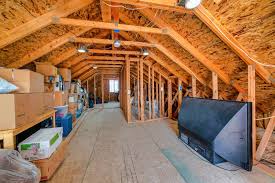Often bathed in natural light, sunrooms provide a versatile space where you can relax, entertain, or even work, surrounded by views of your outdoor space. As interest in home additions that blur the line between indoor and outdoor living grows, sunrooms have become a coveted feature in modern homes. Whether you’re dreaming of a cozy nook for morning coffees or a vibrant space for your green thumb endeavors, planning a sunroom addition requires thoughtful consideration of several key aspects.
- Determine its PurposeX
Before embarking on the design and construction of a sunroom, it’s crucial to clearly define its primary use. Will your sunroom serve as a tranquil retreat for reading and relaxation, a playful recreation area for children, a casual dining space, or perhaps a lush greenhouse? The intended use will greatly influence all subsequent decisions from layout to materials. For example, a sunroom designed as a plant sanctuary might include large skylights and in-floor drainage, while a space for entertaining could require more extensive electrical setups for lighting and audio systems.
- Choosing the Right Materials
When building a sunroom, selecting the right materials is pivotal not only for aesthetics but also for durability and energy efficiency. For those seeking expert guidance and high-quality materials, integrating the services of professional sunroom designers and remodelers, such as those at Joyce, like can be a wise choice. This company offers a range of materials that are specifically designed to enhance energy efficiency and durability, crucial for a room so heavily exposed to the elements. This includes options like high-performance glass that minimizes UV radiation and heat transfer, and sturdy, weather-resistant framing materials that promise longevity and reduced maintenance. Look up Joyce Factory Direct home renovations online to find out more about how they can assist you in the process of creating your dream sunroom.
- Consider the Location
The location of your sunroom can significantly impact its functionality and enjoyment. Ideally, it should be situated to take advantage of natural light throughout the day, which often means a southern exposure in northern latitudes. However, the direction it faces should also consider seasonal variations in sun intensity, potential glare, and heat. Proximity to the main living areas of the house can also affect how often the sunroom is used, with more accessible locations typically seeing more use.
- Design for All Seasons
To maximize the use of your sunroom all year round, it needs to be comfortable across different seasons. This involves installing thermal-resistant features such as double-pane insulated glass windows and perhaps even heated floors for colder climates. Consider also the integration of ceiling fans or air conditioning to maintain comfort during warmer months. The goal is to create a space that remains temperate and inviting, regardless of weather conditions outside.
- Integrate with Existing Architecture
A sunroom should look like a cohesive extension of your home, not an afterthought. To achieve this, it’s important to match the architectural style of the existing building—this includes roof lines, window styles, and even construction materials. An experienced architect or designer can help ensure that the new addition blends smoothly with your home’s current design, enhancing its overall charm and curb appeal.
- Obtain Necessary Permits
Before construction begins, it’s essential to understand and comply with local building codes and regulations. Obtaining the necessary permits can sometimes be a complex process, involving detailed drawings and specifications of the planned structure. Skipping this step can lead to legal issues and even require you to dismantle your new addition. Engage with local authorities early in the planning process to ensure that all necessary documentation is complete and approved before moving forward.
- Focus on Energy Efficiency
Creating an energy-efficient sunroom is key not only for environmental considerations but also for reducing heating and cooling costs year-round. High-quality, energy-efficient windows are a must; they should offer good insulation while still allowing plenty of natural light to enter the space. Additionally, consider the use of energy-efficient roofing materials that can reflect sunlight and reduce heat absorption. Installing blinds or shades, including specifically designed gable end blinds for triangular windows, can also help control the amount of heat that enters during the summer and retains warmth during the winter. These elements will make your sunroom comfortable and eco-friendly, cutting down on energy use and costs.
- Select Comfortable Furnishings
Choosing the right furnishings will make your sunroom a welcoming and comfortable space for everyday use. Opt for furniture that can withstand the exposure to sunlight without fading. Natural materials like wicker and bamboo are not only durable but also complement the airy feel of a sunroom. For upholstery, choose fabrics rated for outdoor use as they are more resistant to moisture and fading. Add plush cushions and throw blankets to create a cozy environment for lounging any time of the year.
- Natural Light Maximization
To truly make your sunroom a haven of light, plan your window placements strategically to maximize sunlight exposure throughout the day. Skylights are also an excellent addition, as they increase the natural brightness and can visually expand the space. Consider using reflective surfaces inside the sunroom to bounce light around the room. Mirrors or glossy surfaces on furniture or decor can enhance the natural light without the need for additional artificial lighting during the day.
- Add Greenery
Integrating plants into your sunroom not only enhances its aesthetic appeal but also potentially improves indoor air quality. Choose a variety of greenery that thrives in abundant natural light, such as ferns, palms, and succulents. Tall plants can add drama and a sense of verticality to the space, while hanging plants can add depth and interest. Besides, the natural colors of the plants will complement any decor style, reinforcing the outdoor feel inside your sunroom.
Enhancing Your Home with a Sunroom
Adding a sunroom is a wonderful way to enhance the functionality and aesthetic appeal of your home. It offers a unique space that bridges the indoors with the outdoors, providing a sanctuary of warmth and light that can be enjoyed year-round. By focusing on energy efficiency, comfort, and versatility, you can create a space that not only adds value to your property but also becomes a favorite gathering place for family and friends. With thoughtful planning and consideration of these tips, your sunroom will be a beautiful, energy-efficient addition that complements your lifestyle and the architecture of your home.




